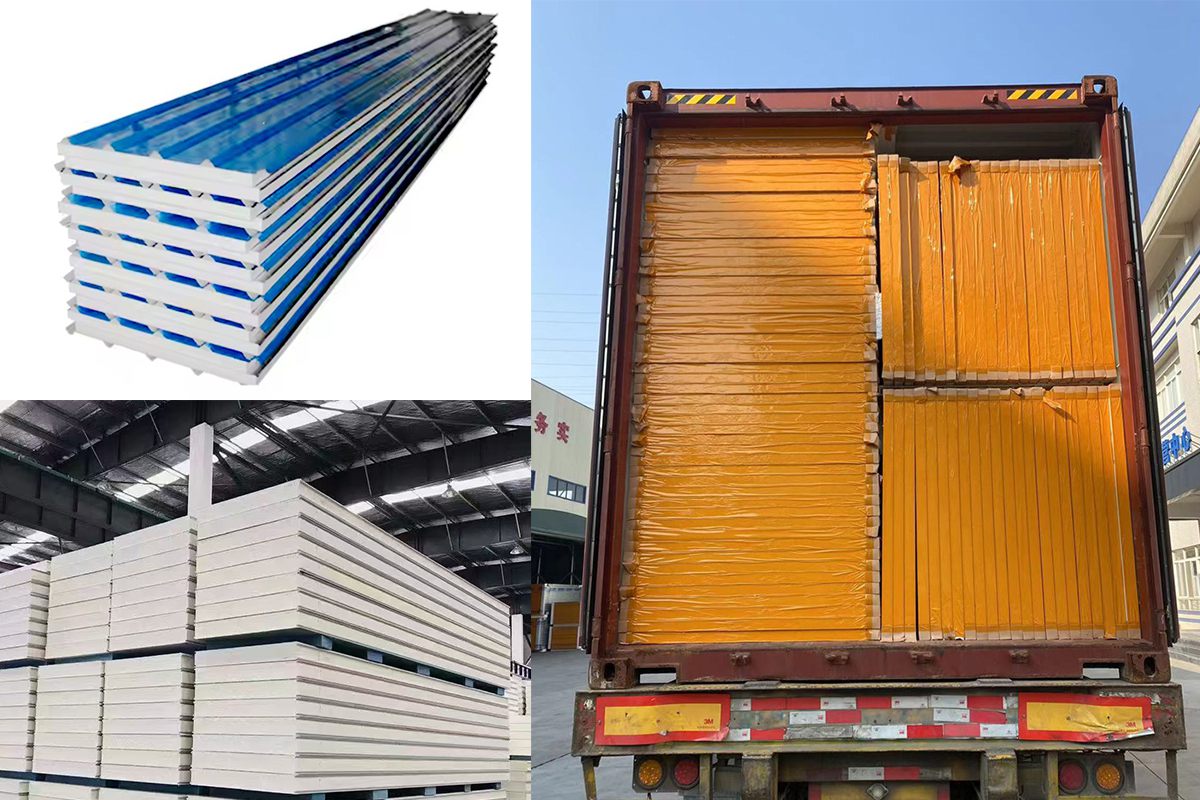In the modern construction industry, sandwich panels have emerged as a popular choice for exterior walls and roofing systems due to their efficiency, durability, and energy-saving properties. These panels are composed of two outer layers with an insulating core that provides thermal insulation, soundproofing, and structural integrity. LUSEN's guide will walk you through the art of installing sandwich panels in a way that is both efficient and effective.
Preparing the Construction Site
Before any installation begins, it's crucial to prepare the construction site meticulously. According to the design blueprint, precise measurements and lines must be laid out on-site. For steel-framed structures, vertical web-like supports known as wall panel support studs need to be welded into place. Prefabricated sandwich panels should match these supports in size, ensuring they can interlock seamlessly. Upon delivery, the panels are stacked on-site with care taken to protect them from moisture and precipitation.
Installing Wall Panel Support Studs
The next phase involves installing the wall panel support studs precisely where the design has indicated. The lower end of each stud is embedded into the ground, providing a stable foundation for the sandwich panels. This step is fundamental to the structural integrity of the building envelope.
Setting Up the Working Platform
Safety is paramount, so setting up a mobile working platform is essential for workers who will be positioning and adjusting the panels. Equipped with wheels at the top, this platform can slide along the support studs, allowing workers to move freely and efficiently during the installation process.
Alignment and Verticality Control
Precision is key when aligning the panels. Using a total station, a surveying instrument, workers draw vertical control lines on the support studs. This meticulous alignment ensures that each panel is perfectly plumb, contributing to the aesthetic and functional quality of the finished structure.
Hoisting and Positioning Panels
With the aid of a crane equipped with specialized lifting gear, the first sandwich panel is hoisted into position adjacent to the support stud. Workers on the platform adjust the panel until its edge aligns perfectly with the vertical control line. Once aligned, the panel is secured using clips and fasteners, ensuring a solid connection between the panel and the stud.
Repeating the Process
The procedure is repeated for each subsequent panel, ensuring that all pieces fit together like a well-oiled machine. Each panel is lifted, positioned, adjusted, and secured until the entire wall surface is covered.
Sealing and Waterproofing
After all panels are installed, attention turns to sealing the joints between panels. This step is critical for maintaining the building's thermal performance and preventing water infiltration.
Window and Door Openings
Finally, openings for windows and doors are cut into the panels according to the design specifications. Careful trimming around these openings ensures clean edges and a professional finish.
By following these steps, the installation of sandwich panels becomes a streamlined process that results in high-quality, durable building exteriors. The combination of preparation, precision, and professionalism ensures that every project meets the highest standards of construction excellence.
